Rosé: Commanderie de Peyrassol 2016 – Pairing Rating: 9.0 out of 10.0
Rhone White Blend: Vieux Telegraphe Chateauneuf du Pape Blanc 2014 – Pairing Rating: 9.5
What? Another chicken recipe? Well, here are the stats, Jack. The USDA estimates that the per capita consumption of chicken in 2018 will be 93 lbs., versus beef consumption of 58. And that’s a good thing (for carnivores, that is) because beef production requires about seven times more land and emits seven times more greenhouse gases as chicken, per gram of protein, according to the World Resources Institute. Furthermore, this chicken dish is simple to prepare and, most importantly, unbelievably good.
We found the recipe on the New York Times Cooking app, where the reader commentary could not have been more glowing. Not a single disappointment from home chefs. We have reproduced the recipe below, with some very modest enhancements. Recipes like this remind us of great recordings (Abbey Road, Mahler’s 2nd Symphony, Kind of Blue, In-A-Gadda-Da-Vida . . . ok, maybe not that last one), where repetition never seems tiresome or boring.
With regard to wine pairing, sure you could opt for Chardonnay or Pinot Noir, but we are firmly in the camp of drinking wines from the locale of the spices in the recipe. In this case, the Herbes de Provence (savory, thyme, rosemary, lavender and fennel) used in this recipe push us to consider the wines of Southern France: Rosé from Provence and a white blend from the Southern Rhone.
First up . . . the Rosé from Commanderie de Peyrassol 2016 ($22). This Domaine, located in the heart of Provence, was founded by the Knights of Templar back in the time of the Crusades. After the French Revolution, ownership changed hands among various families. It wasn’t until 1981 that the Domaine’s wines were sold to the public.
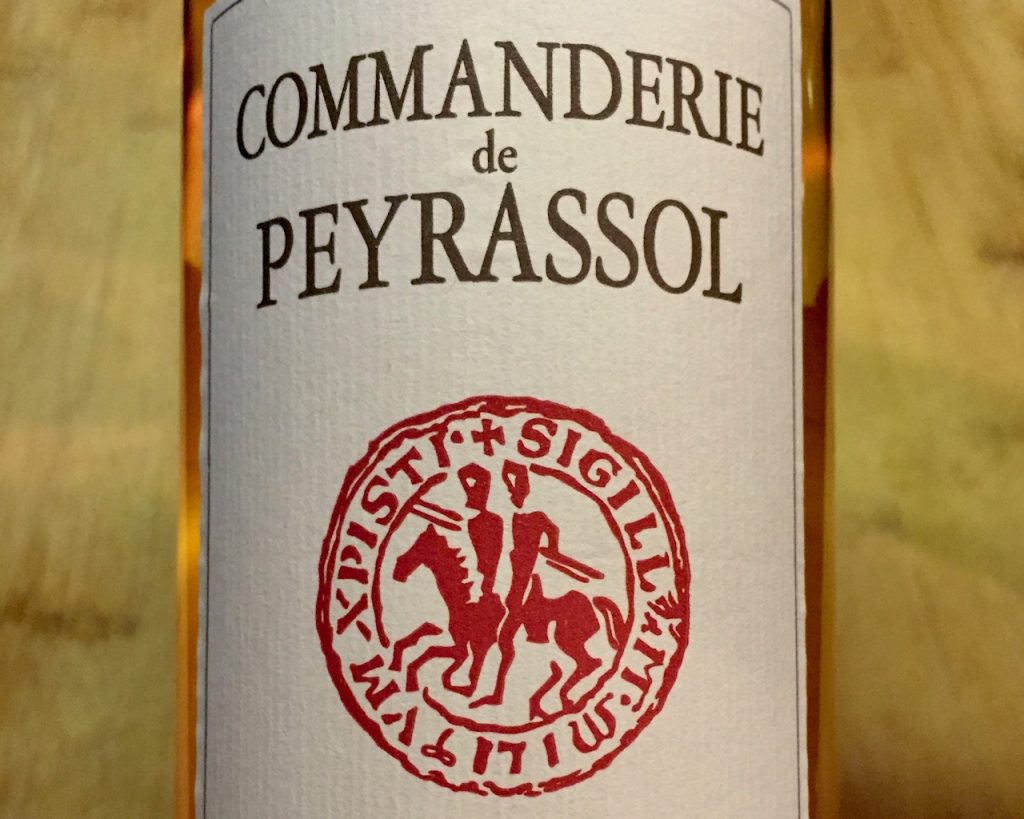
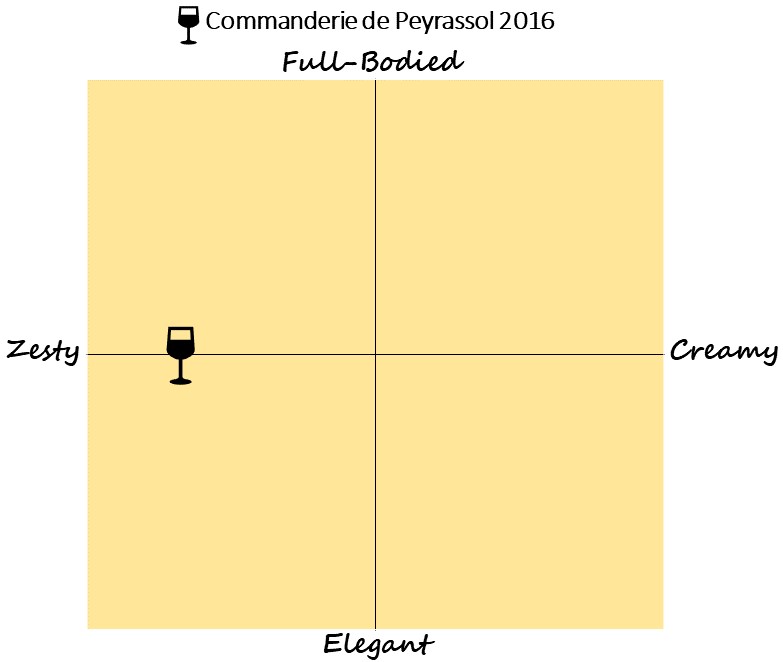
The Domaine makes a number of pink, white and red cuvées, but this Côtes de Provence Rosé dwarfs the others in terms of bottles produced. With wide US distribution, the wine is relatively easy to find. The Commanderie is a blend of Cinsault, Grenache and Syrah in percentages that vary from vintage to vintage. The nose gives up floral notes and hints of orange zest; while on the palate, strawberry, slightly sour cherry, red currant and melon come forward. Not your typical patio-sipping Rosé, the Commanderie is built for food, with zesty acidity that pairs beautifully with the vermouth, lemon citrus and shallots in the sauce of this chicken dish.
North and west of Provence lie the villages of the Southern Rhone, the land of Grenache Blanc, Roussanne, Marsanne and other varietals used to blend rich, elegant white wines. In our view, Chateauneuf-du-Pape Blanc represents the top end of quality here. An excellent expression of this white wine blend is made by Domaine du Vieux Telegraphe ($84 for the 2019 vintage). Not inexpensive, for sure, but one sip will confirm the quality and complexity this wine offers.
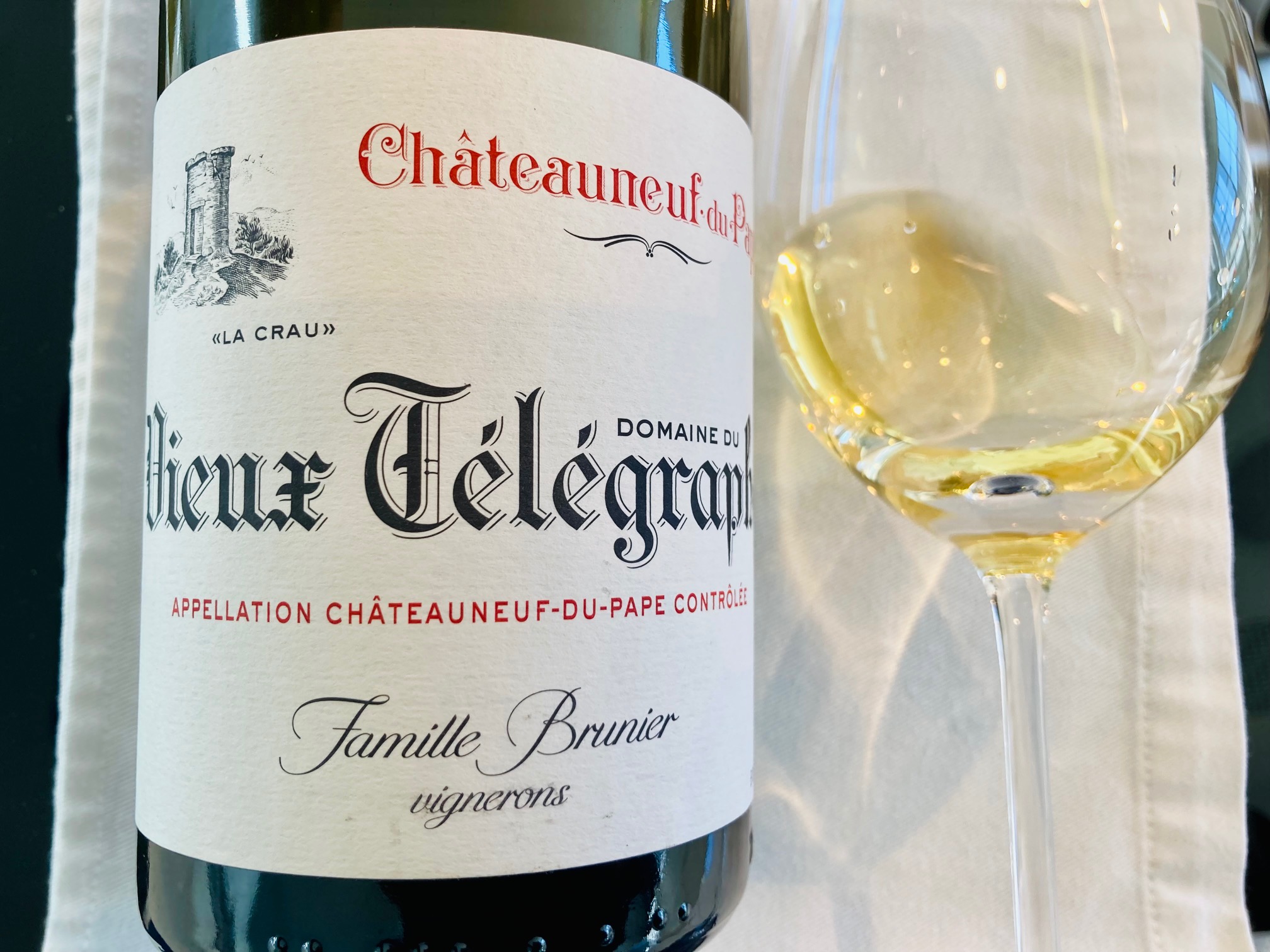
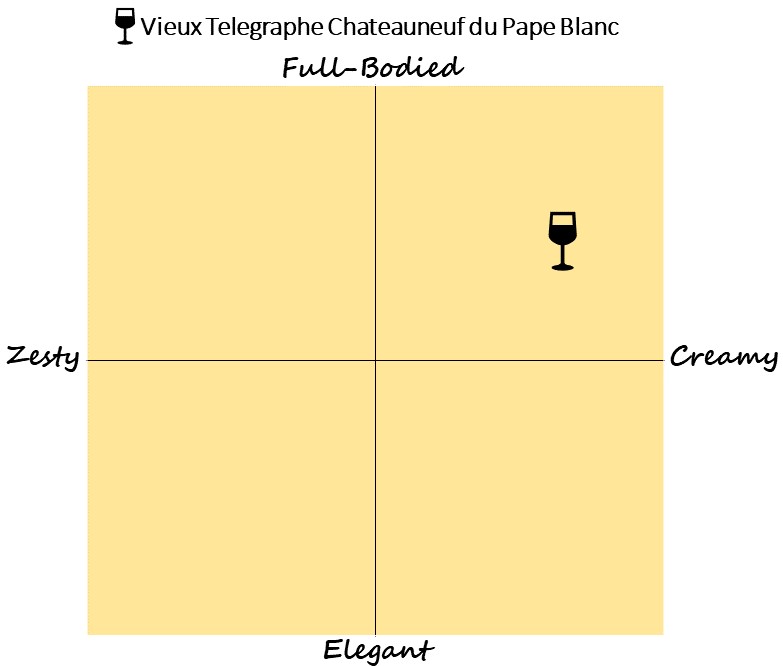
The Vieux Telegraphe is a blend of 40% Clairette (for fresh floral notes), 25% Marsanne (texture), 25% Roussanne (richness) and 10% Bourboulenc (zest). The resulting blend had a honeysuckle nose coupled with hints of Meyer lemon and nectarine. The big difference between this wine and the Rosé is its rich mouthfeel. The Vieux Telegraphe tasted of honeyed-citrus, stone fruits and pears, all enveloped in an elegant texture that matched perfectly with the sauce of the roasted chicken dish.
Less expensive white Rhone blends are readily found in the broad category of Cotes du Rhone Blanc. We recommend the following Southern Rhone producers: Coudoulet de Beaucastel ($41), Saint Cosme ($18) and Andre Brunel’s Becassone ($16). Similar blends can be found from US wine producers – Tablas Creek, Margarum and Epoch. All deliver high levels of complexity, elegance and lusciousness.
While we thoroughly enjoyed both wines with this dish, we were won over by the white blends of the Southern Rhone. If you have yet to taste these wines, then let this recipe serve as your introduction. And like those great recordings, this is a pairing you will revisit often.
Roasted Chicken Provençal – Rosé or White Wine?
Ingredients
- 8 bone-in, skin-on chicken thighs
- 2 teaspoons kosher salt
- 1 tsp freshly ground pepper
- 1/2 – 3/4 cup all-purpose flour
- 3 Tbsp olive oil
- 2 Tbsp Herbes de Provence
- 1 lemon cut length-wise into 8 segments
- 8 – 10 garlic cloves, peeled
- 4 – 6 mediums-size shallots, peeled and halved
- 1/3 cup dry vermouth
- 2 Tbsp unsalted butter
- 4 sprigs of fresh thyme, for serving
Instructions
- Heat oven to 400 degrees.
- Season the chicken thighs with salt and pepper, with more on the underside than the skin.
- Put the flour in a shallow pan and lightly dredge the chicken, shaking off the excess.
- Place the floured thighs skin side down on a plate
- Sprinkle 1 Tbsp of the Herbs de Provence on the underside of the thighs
- Swirl the olive oil in a large roasting pan.
- Place the floured chicken in the pan, skin side up.
- Arrange the lemon segments, garlic cloves and shallots around the chicken.
- Sprinkle the remaining 1 Tbsp of Herbs de Provence all over the contents of the roasting pan.
- Pour the vermouth over the lemon, garlic and shallots, avoiding the chicken skin as much as possible.
- Place the roasting pan in the hot oven and roast for 20-25 minutes.
- Remove the pan from the oven, close the oven door and baste the chicken thighs with the pan juices..
- Return the pan to the hot oven for another 20-25 minutes until the skin is crisp and the meat cooked through.
- Plate the chicken thighs, lemon segments, garlic and shallots on 4 plates.
- Add the unsalted butter to the sauce in the roasting pan and stir until melted.
- Spoon the sauce on and around each chicken thigh and garnish with thyme.
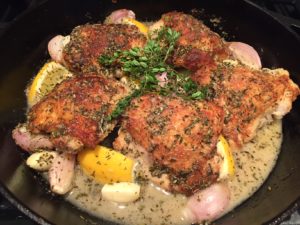

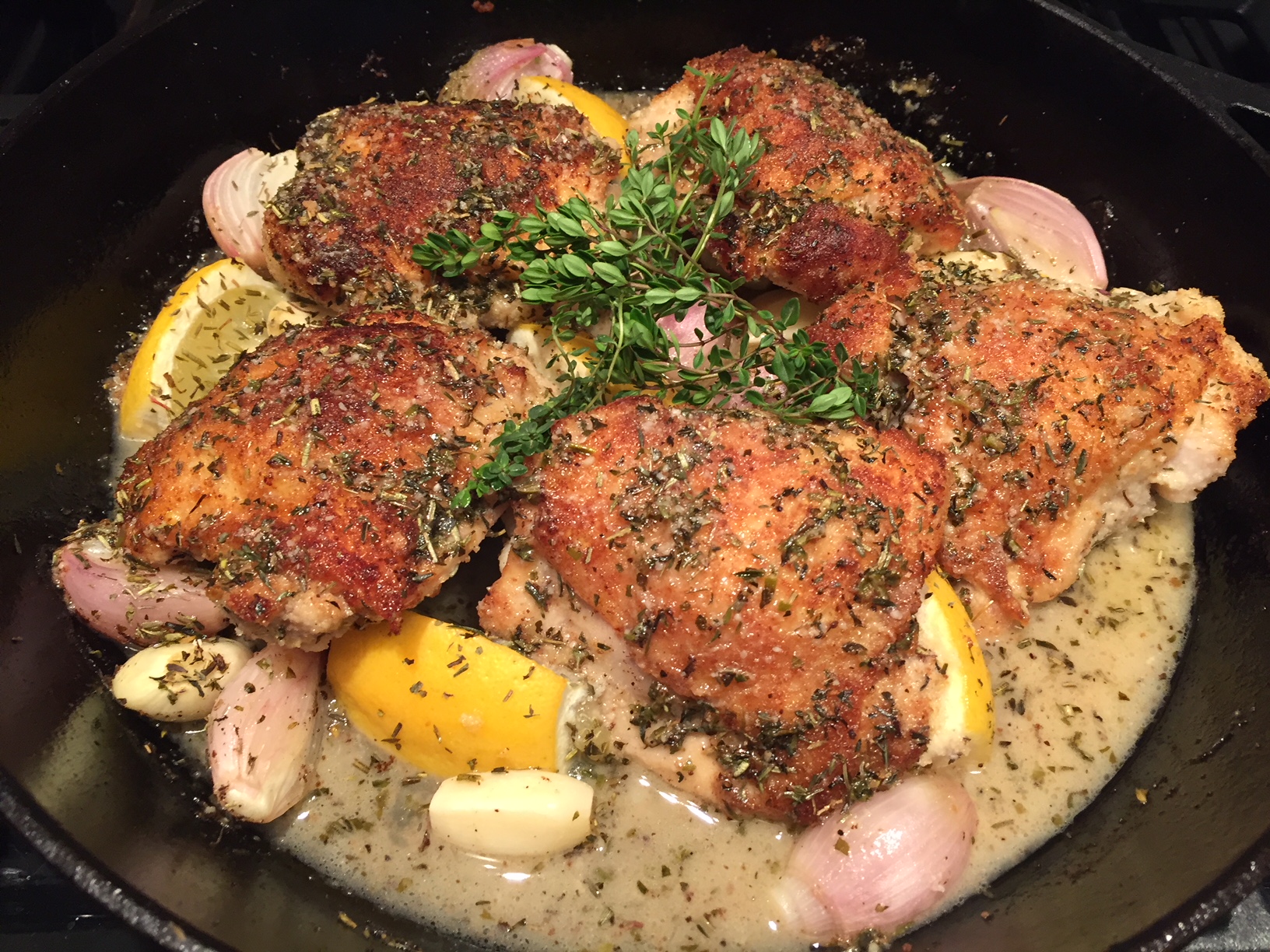
Eben says
Great as always Zark, thanks for sharing!
Steven says
Thanks for commenting, Eben. Hope all is well.